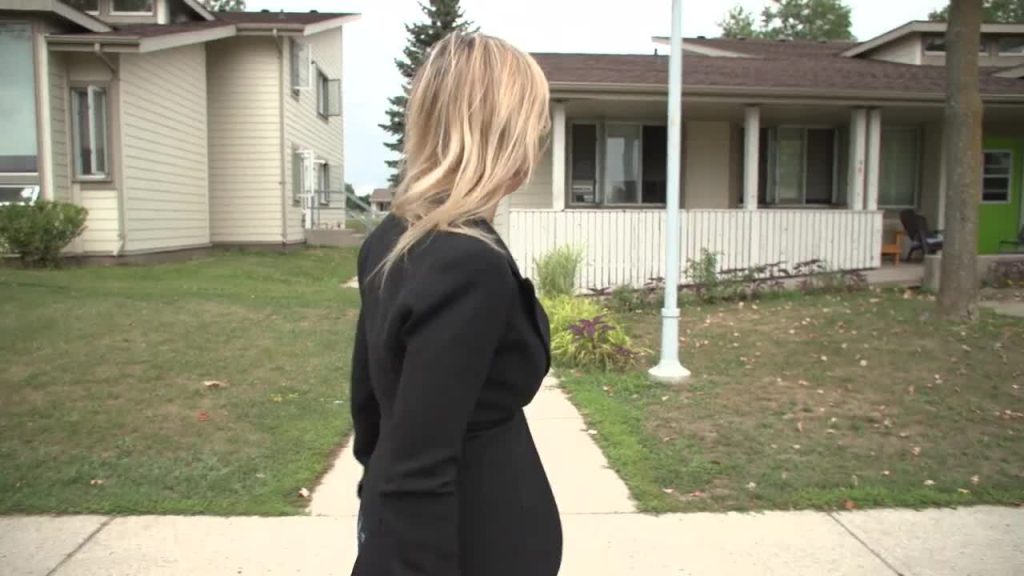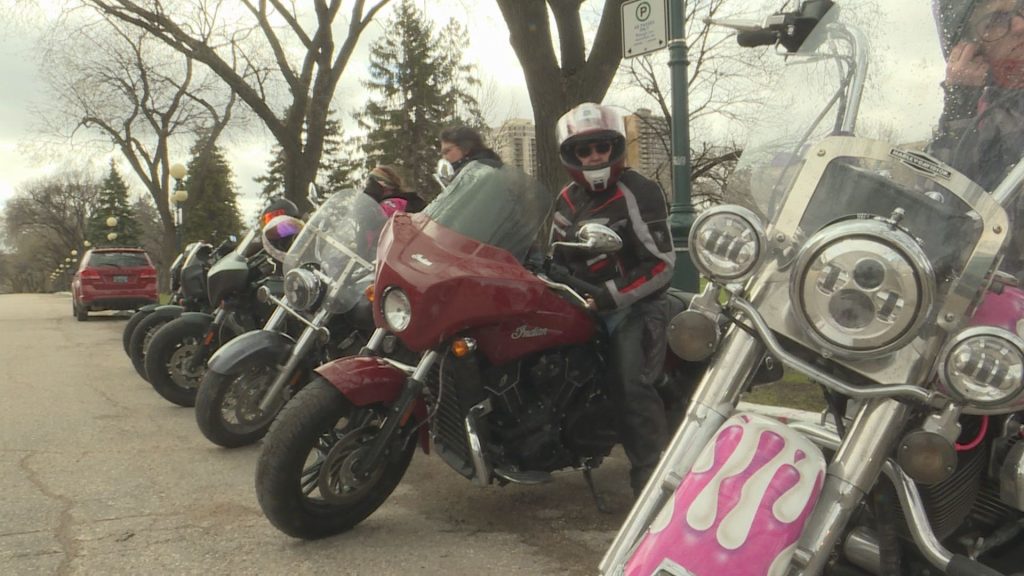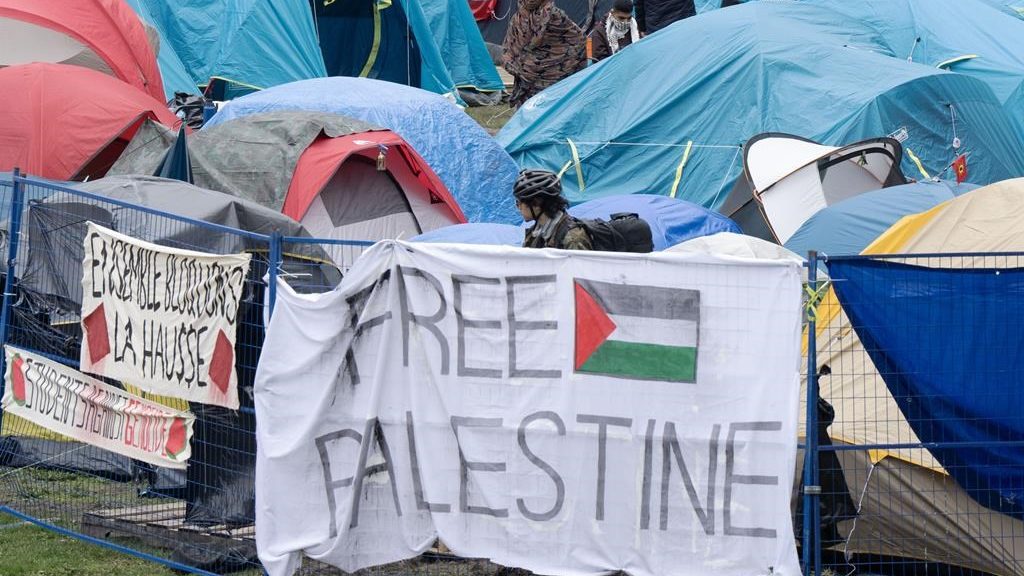A firsthand account of life behind bars in Canadian women’s prisons

Posted May 22, 2023 1:34 pm.
Last Updated May 23, 2023 4:29 pm.
Movies and television shows have betrayed me, and probably you too at least when it comes to depicting life behind bars.
For over a decade, I’ve been fascinated with and done a lot of reporting on Canada and Ontario’s correctional system.
I’ve been in many provincial jails, and they look like jails, primarily dated, bars on some cells, metal doors with small windows and hatches, inmates in orange jumpers and t-shirts.
But when it comes to women’s prisons where offenders are convicted of serious crimes and serving terms of two years or more, it looks more like a campus than a correctional centre.
For six months, my crew and I spent considerable time in the Grand Valley Institution for Women (GVI) in Kitchener, ON and Alberta’s Edmonton Institution for Women (EIW) to film the latest episode of VeraCity: Prison Moms.
I was expecting scenes from the TV show Orange is the New Black and the Australian show Wentworth, and instead, it felt like a rougher version of 90210 but with an all-female lead cast.
The first time I went to EIW, I went solo. I was meeting an inmate, Danielle Ouellette, to gain some background about her story.
Correctional Services Canada set up the meeting as she was the only mom raising her child with her in that prison. I’ll be honest, I was nervous. I didn’t know how rough it would be, and I needed to make a good impression on the upper brass correctional staff so that we could film there and the inmate so we had somebody to film.
I put more thought into that outfit than I probably did for prom, and I was more scared than I was when embedded with our troops.
None of the news articles I read had a picture of Danielle and her social media was under an alias. All I knew about her was that she was convicted of attempted armed robbery, arresting her involved near SWAT-like police activity, and that she was raising her son alongside her in prison.
Imagine my surprise when she bounced out of her unit to greet me in the lobby, sporting pink hair, a pink tank top and leggings, handmade beaded earrings with a big smile on her face. Her adorable four-year old son Charlie followed behind with his big beautiful eyes, and infectious smile, asking if we are going to the big meeting room.
This wasn’t scary. This felt like a younger version of a long-term care home. Every inmate who passed by stopped and said “Hello,” or at least smiled and they all gravitated to Charlie. He was playing with dinosaurs in the meeting room, where we had to keep the door open for my “safety”.
Prison wasn’t what I expected. Inmates were walking throughout the building with seemingly few restrictions. Some were outside and gardening, others were walking laps through the grounds which backs out onto a car dealership.
Nestled in an industrial park, this prison had rabbits running through the field, a sweat lodge for Indigenous inmates, and a playground in the back just for Charlie. This was not the type of correctional facility I anticipated.
Throughout the summer of 2022, our crew and I were there over several days, and we didn’t witness a fight. We didn’t see any tears. We didn’t hear anybody get into any trouble, except for Charlie who got a small scolding for dumping all his crayons on the floor and refusing to pick them up.
I reasoned that when we got to Grand Valley in Kitchener, things would be different. In Edmonton, we were restricted to the minimum security area, but at GVI, we were aiming to see it all.
It took months to gain access to these prisons, but they didn’t end up looking like prisons very much at all. lMost inmates at GVI live in cottages with their own bedrooms and shared bathrooms. They really do look like homes with family rooms and a large kitchen, chore lists and home-style restrooms.
Every inmate’s room that I saw had a desk, drawers, window and was filled with touches from home, Pictures of their kids lined their walls, TVs were propped up on books, some from the library, some brought in, makeup and cards from friends and family and school work cluttered on their desks. It really did remind me of my old university dorm room, minus the roommate.
Women gather and sit on picnic tables and their front porches, gossiping and eating snacks.
More fitness-inclined women walk a circle track around what can only be described as a suburban cul-de-sac filled with their cottages. Laundry dries on lines outside, women tend to their gardens, some read books on Muskoka chairs.
The main building has lots of posters reflecting the prison’s diversity, Indigenous teachings, achievements of Black Canadians and clubs for 2SLGBTQ+ and “lifers” fill the walls.
One of our contributors gave us a cooking lesson, while making her avocado, egg and parmesan cheese sandwich. If the butcher knife hadn’t been chained to a wall, you would’ve thought it was her kitchen back home.
When I saw some inmates chasing each other in late summer, I assumed the worst, a potential fight, maybe somebody stole something from another inmate? Nope. It was a game of tag. When a contributor was late for our outdoor meeting and I didn’t know which cottage was hers, other inmates were quick to help me track her down. This felt like a neighbourhood, not a correctional centre.
Sure, there were signs we were still in a prison. Video cameras are everywhere outside, barbed wires line the fences,and signs remind people that their phone conversations can be monitored and recorded. But we walked around the “campus” with very few restrictions.
Our staff chaperone always had their alarm button fastened to their pants or skirts, but they didn’t need to use it. I actually didn’t hear a single alert over the PA system. It became clear that I wasn’t going to be reporting live in a prison riot.
It wasn’t until we walked into the maximum security unit that we truly felt like we were in a prison.
You’d think that this is where all the murderers and child killers go, but you’d be wrong. Most of those are roaming in the cul-de-sac, playing tag and planting flowers. Maximum security tends to be reserved for inmates who are violent on the inside. One of our contributors spent over a year there after getting into a rather violent fight with another inmate, she described it as “hell on earth”, and once I got through the sally port, I understood why.
Gone are the gardens and colourful posters with inspiring messages and promoting clubs. Welcome to bleak walls and solitude. The unit, located in one of the main buildings, was eerily quiet.
The segregation cells were empty on this day, but the meal hatches and metal doors with small windows that are familiar sights in provincial jails were there.
Unlike the medium and minimum security areas, inmates here can only socialize with others in their “pods,” up to five inmates living together.
They get one hour of outdoor activity every day, in a secure yard with gym equipment. It’s isolated from the rest of the compound, preventing inmates here from even communicating with those in medium security.
There are no gardens. The gym equipment was akin to those seen at some playgrounds, with no cables or parts that can be removed to later be used as weapons. Cameras are much more prevalent here, and the entire atmosphere is one of despair. This is not the green gables where we spent most of our time.
That’s not to say that the rest of the prison was perfectly shiny and bright. The overrepresentation of Indigenous women was apparent, nne of the women I spoke with expressed concerns about another inmate, or rather, group of inmates coming after her.
Another woman shared that she was going through a severe state of depression, and had recently tried to take her own life with Tylenol. Another inmate was the victim of sexual assault and after an eight-month long investigation, a correctional officer at GVI is now charged with sexual assault and breach of trust. He is on administrative leave.
And there were tense moments, to be sure. An inmate convicted of very violent crimes, who was also very pregnant and who didn’t meet the criteria for the residential mother-child program, was banging at a door and screaming for another inmate to get outside.
I watched and waited for something to come of it, but an officer gently turned the screamer away. Some women weren’t too happy to have a film crew on site, and judging by the looks I was getting, weren’t too happy to have me talking to so many of their peers.
I got my share of death stares, and just made sure to stay close to the officer and crew.
I expected some level of protest or unsanctioned activity on Prisoners’ Justice Day, a day to remember people who died preventable deaths in prison.
Afterall, GVI is where 19-year-old Ashley Smith died by suicide while on suicide watch with officers watching it all transpire on video.
It’s also where Terry Baker, convicted of murdering another teen when she was just 16 years old, took her own life in 2016. The inquest into her death is scheduled for this June.
So when the day arrived, I was keeping my eyes peeled and ear to the ground for any sort of straying from the routines we had seen play in and out and there wasn’t any observable difference.
The only protest I saw was from one of our contributors, taking a one-day hunger strike in solidarity. She wasn’t alone, but she certainly wasn’t in the majority.
It;s easy for staff to clear away the trash, wash the floors and hide troubled inmates when a film crew comes to visit for a few days or even a week. But we were in and out of women’s prisons from June through Christmas, sometimes for a day, sometimes for three and four at a time. Keeping the troublemakers away, especially with the freedom we had on the grounds, would have been very difficult.
The span of time we spent there, and the frequency of our visits, gave me the sense that we got a real look at how the prison operates on a daily basis. We didn’t see much lipstick, but we also didn’t see too many bruises.
I wouldn’t hand out my number or accept a Facebook friend request from many of the inmates I met, but I was surprised by how many women I found myself cheering for, and on.
I watched rookie, first-time inmates settle in and find their paths to redemption and rehabilitation. I got to see how small freedoms, like making your own meals and balancing your food budget, working at an on-site textile shop or even just acting as a household manager ,can give these women a sense of purpose and normalcy.
I saw how gathering traditional medicines and learning traditional Indigenous practices gave some women a place to channel their energy, instead of just staring at a cinderblock wall.
I saw how beading — which must be one of the most popular pastimes, because just about everywhere I looked, inmates were wearing lanyards or earrings they made themselves — showed women that their hands could create something beautiful.
I learned a few prison hacks, like you can make pink hair dye with conditioner and the ink broken out of a few sharpies. Rice cakes with jam or peanut butter are a good snack food that will fill you up without all the fat from a bag of chips.
The right pencil crayon can double for eyeliner, especially if you can “somehow” heat up the pencil. And prison hooch is reportedly still best made in a toilet, But I learned a lot about the human spirit too.
I witnessed hope flourish, even from behind bars. I saw that three squares, a roof and even TV and programs aren’t nearly as valuable as freedom. I saw remourse, and indifferece, aspirations and trepidations. I witnessed pride in accomplishements and shame in failures.
Since filming, some of our contributors have left prison and have reintegrated into society. I keep in touch with a few, and they are showing me, themselves, and their children that change is possible. My time with these women shattered stereotypes. I expected chaos and violence, but I saw real efforts at redemption and personal growth.
Watch “VeraCity: Prison Moms” on Sunday May 28 at 10 p.m. only on Citytv.








